The Golden Age of Tortuga Island
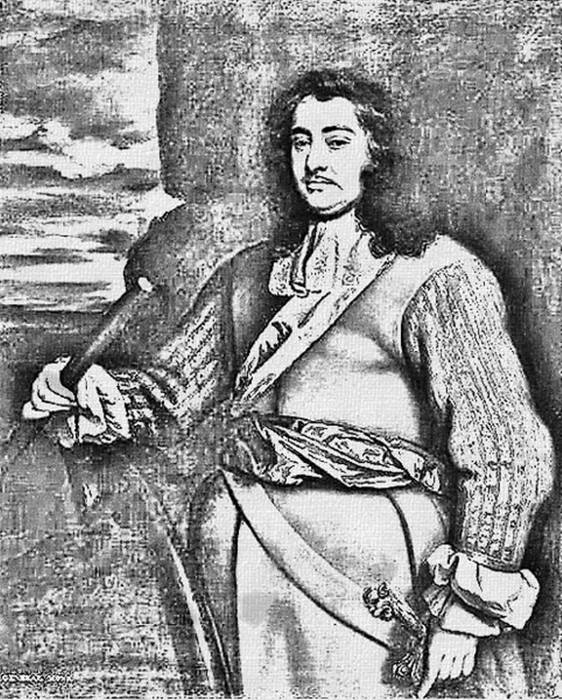
In his youth, he took part in the Catalan War (1646 – 1649 gg.), Having received the noble rank and the rank of captain for military merits. After the war ended, d'Ogeron lived peacefully at home, being the owner of the Cemetery of the Drowned in the city of Angers and nothing seemed to portend him an adventure in the West Indies. But in 1656, he succumbed to the entreaties of acquaintances and invested almost all of his funds in a company for the colonization of land on the South American river Ouatinigo (also known as Ouanatigo, Ovanatigo, Ouanarigo).
Beginning of the Caribbean Adventures of Bertrand d'Ogerona
In 1657, having chartered the Pelage ship, he went to the West Indies with hired servants. By the time he arrived in Martinique, it became known that the colonization project, which had such hopes, did not take place, and therefore d'Ogeron went to Hispaniola. On this island in the Gulf of Cul de Sac, near Leogan Harbor, his ship was wrecked. According to du Tertre, d'Ogeron and his servants had to
A few months later, d'Ogeron still managed to return to Martinique, where it turned out that the second ship, chartered by him, and which had been released later, had already been sold by a certain Mr. Vigne, who, in compensation, gave him only goods worth 500 livres. Going to France, d'Ogeron bought a consignment of wine and brandy with which he returned to Hispaniola, but this commercial enterprise was not successful, since many other merchants brought alcohol along with it, and its prices fell. It was easy to lose heart from such setbacks, but the stubborn Anjou, having borrowed money from his sister and obtained from the king the right to "exclusive trade within the Bahamas and Caicos Islands, also on Tortuga and the coast of Hispaniola", returned to the West Indies, having founded in Leogane.
The activities of Bertrand d'Ogeron as governor of Tortuga
In 1664, the French West Indies company acquired the rights to Tortuga and Saint-Domengo. On the recommendation of the governor of Martinique, Robert le Fischaux de Frische de Clodore d'Ogeron was appointed to Tortuga.
The beginning of his reign was overshadowed by a conflict with settlers, who were extremely dissatisfied with the demand of the West Indies company (namely, it appointed d'Ogeron Governor) to abandon trade with the Dutch, who offered their goods much cheaper.
Alexander Exvemelin wrote:
In May 1670, the inhabitants of Tortuga and the Coast of Saint-Domengo, incited by the Dutch smugglers, revolted. D'Ogeron, acting by the “carrot and stick” method, managed to negotiate with them. On the one hand, he spread the word about the approach to the island of a powerful government squadron, on the other, he was negotiating, which ended in a compromise solution, according to which the French courts were allowed to trade on the coast of the colony of Saint-Domengo, deducting in favor of the West Indian company 5% of the price all goods sold or purchased. At the end of April 1671, Tortuga was pacified. Exvemeline reports:
And in October 1671, a decree was received from King Louis XIV on the complete amnesty of the inhabitants of Tortuga and the Coast of Saint-Domengo.
In the future, no friction between d'Ogeron and the inhabitants of Tortuga did not arise. He also had excellent relations with the “coastal fraternity”; he even stopped taking passport fees and permission to freely leave Tortuga harbor from corsairs. He also issued letters of marque for free, while the Governor of Jamaica took £ 20 (200 ecu) for letters of marque.
Jean-Baptiste du Tertre claims that d'Ogeron
In Jamaica, the corsairs were supposed to give a tenth of the booty in favor of the king, and one fifteenth in favor of the admiralty (a total of 17%).
In addition, d'Ogeron tried to supply “his” filibusters with letters of letters of those states that at that time were at war with Spain. All this contributed to both increasing the authority of the new governor of Tortuga and the prosperity of the island entrusted to him. The fact that the economy of Tortuga is now completely dependent on the luck of the Caribbean corsairs and the number of filibuster ships entering the island's harbor, the French authorities tried to ignore. Marshal of France Sebastian Le Pretre de Vauban said on this occasion:
This flexible policy of d'Ogeron led to the fact that some filibusters of Jamaica chose to leave there, taking advantage of the "hospitality" of the governor of Tortuga. Among these was John Bennett, who, at the end of 1670, went to Panama with Henry Morgan: when peace was made between England and Spain, he went to Tortuga, replenishing the crew with French corsairs and receiving a privateer certificate from d'Ogeron that allowed him to attack the Spanish and Dutch ships.
Another member of the Panamanian expedition of Henry Morgan, Humphrey Furston, refused the amnesty, which on behalf of the king was offered to all the corsairs of Jamaica and also moved to Tortuga. His consort ("partner") was the Dutch filibuster Peter Janszoon, better known in Jamaica as Peter Johnson.
Other “defectors” were John Neville, John Edmunds, James Brown and John Springer.
In 1672, captains Thomas Rogers and William Wright left Port Royal for Tortuga. Three years later, in March 1675, Rogers, sailing as a French marque, found your old acquaintance, Henry Morgan, on the east coast of the island, who was shipwrecked, heading for Jamaica from London already as a knight and vice-governor of this island - and kindly delivered him to the place of the new service. And in April of the same year, Sir Henry Morgan issued an official invitation to all his Jamaican comrades-in-arms to bring the captured prizes to the “good old Port Royal”. Unfortunately d'Ogeron, many of Morgan's friends then, indeed, turned back to Jamaica.
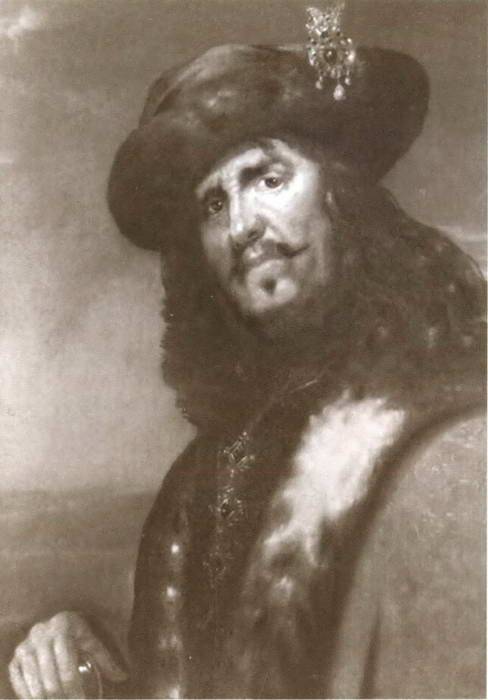
D'Ogeron also attended corsairs of other nationalities, the most famous of which was Dane Barthel Brandt, a native of Zealand. In April 1667, he brought a very serious vessel to Baster - the 34-gun frigate with a crew of 150 people. Having received a letter of marque, Brandt hijacked 9 English merchant ships (prizes are approximately 150 000 pesos) and 7 ships of his "colleagues" - English filibusters, the largest of which was the former Spanish frigate "Nuestra Senora del Carmen" armed with 22 guns. The number of ships taken on board was so great that Brandt was forced to burn 7 of them, 2 he generously gave to the captured British, 2 then sold the very best in Europe.
Francois Olone - the most famous and terrible filibuster of the island of Tortuga
During the reign of Bertrand d'Ogeron on Tortug, Francois But, better known as Francois Olone (he received the nickname by the name of the port city of Sables d'Olonnne in Lower Poitou, from which he was a native), became one of the most cruel West corsairs -India.
He was called the “Scourge of Spain,” no one knew the reason for the hatred that Olone had throughout his life been with the Spaniards. Of the captured Spaniards, he usually left only one alive - so that he could talk about his next "feat". Others were executed, and often - Olone himself. Exvemelin claims that he could have licked the blood of victims from his saber.
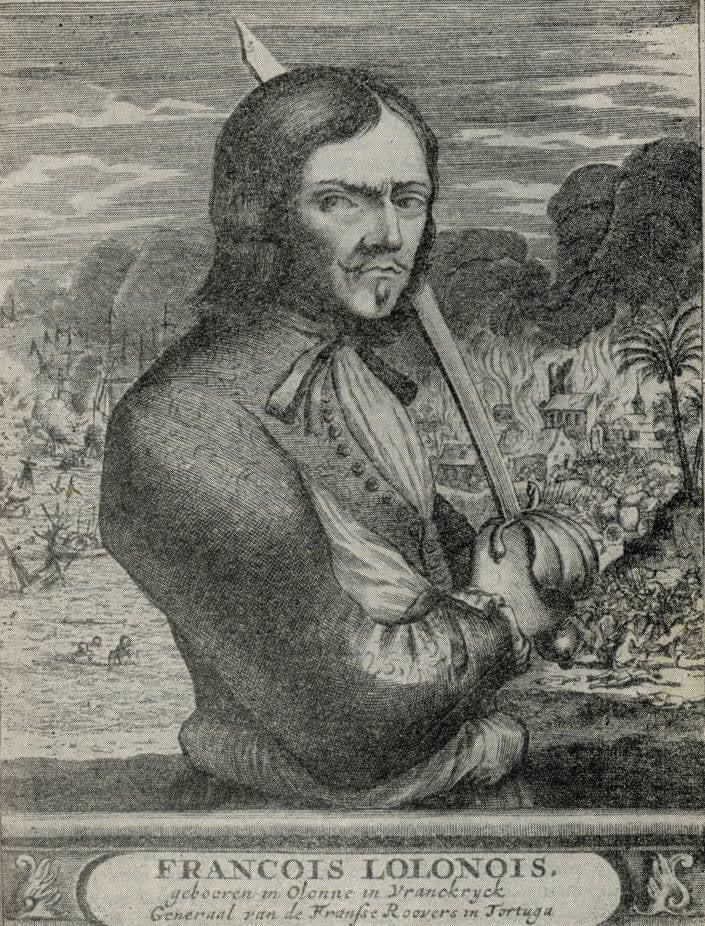
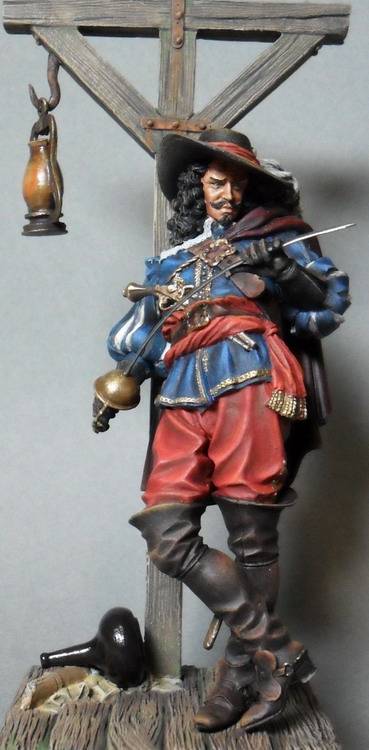
His first high-profile feat was the capture of an 10 cannon ship on the island of Cuba, on which there were 90 soldiers - despite the fact that there were only 20 people in the command of Olone himself, and the Spanish ship was sent by the Governor of Havana precisely to hunt for this pirate (1665 g. ) In 1666, Mr. Olone led the extremely successful campaign of the corsairs Tortuga and Espanyola to Maracaibo (d'Ogeron carefully furnished him with the Portuguese privateer certificate).
Olone was lucky from the very beginning: at Espanyola he intercepted a Spanish merchant ship with a load of cocoa and jewelry, which was sent to Tortuga (the total cost of the “prize” was about 200 000 pesos). And on the island of Saona, a ship was seized with weapons and a salary for the Spanish garrison of Santo Domingo (12 000 pesos). Having landed the crew of this ship ashore, the corsairs attached the ship to their squadron. After the corsairs seized the fort El Fuerte de la Barra, which was covering the Maracaibo, panic broke out among the townspeople: rumors circulated that the number of Frenchmen exceeded 2 000 people (in fact, about 400). As a result, the inhabitants of Maracaibo fled:
(Exememeline.)
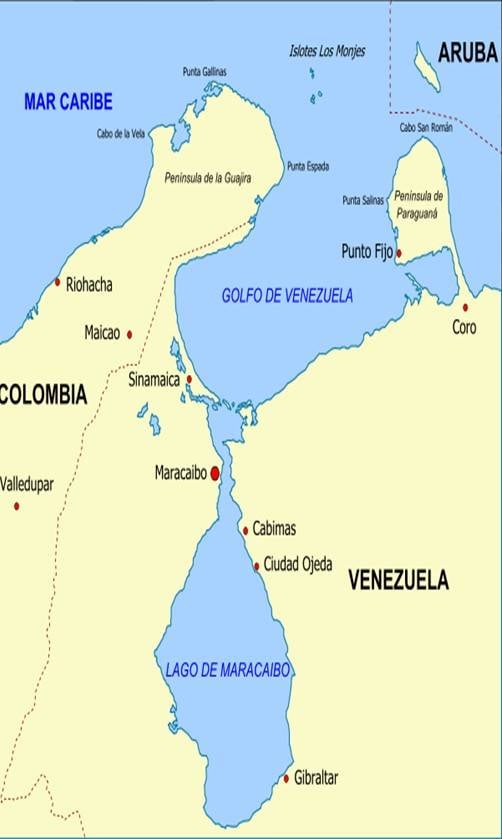
Gibraltar, which was located on the opposite side of the bay (sometimes called the lake) of Maracaibo, was also captured by corsairs. His defenders resisted the pirates, but Olone told his people:
The outcome of the battle was decided by the false retreat of the French, which the Spaniards rashly pursued. According to Spanish data, about a hundred soldiers died in that battle, the same number were captured.
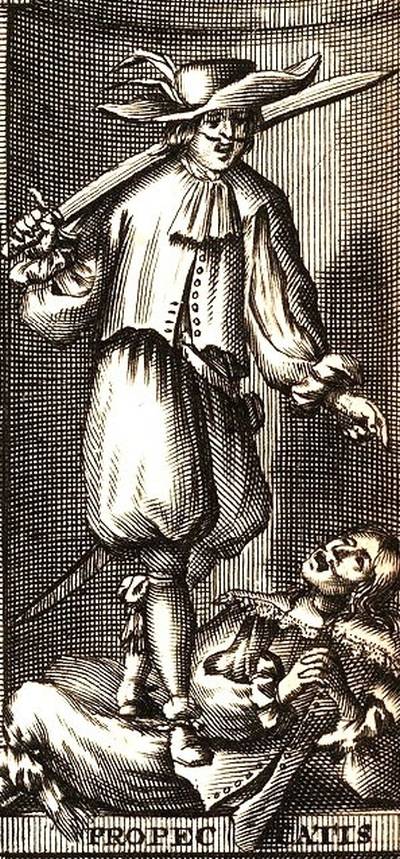
Losses among the people of Olone amounted to one hundred people.
Having received a ransom for Maracaibo and Gibraltar (30 thousand pesos and 10 thousand, respectively), the corsairs went to the island of Gonav off the west coast of Hispaniola, where they divided the money, valuables and slaves that were seized, then returned to Tortuga.
Exememeline evaluates the prey of a trip to Maracaibo in 260 000 pesos, Charlevoix - in 400 000 ecu. The popularity of Olone in a pirate environment after this expedition was so great that the Governor of Jamaica, Thomas Modiford, entered into a correspondence with him, urging him to "come to Port Royal, where he promised him the same privileges as the natural English enjoyed." Apparently, he did not have enough “prizes” from Morgan and other “his” filibusters, he also had to get the hands of the most successful corsair Tortuga at that time. However, Francois Olone in Tortug was happy with everything, and he did not leave for Jamaica.
In 1667, Olone assembled a new flotilla - This time he decided to plunder the Spanish settlement near Lake Nicaragua in Central America. 5 ships set off from Tortuga and one from the island of Hispaniola. The largest of them was the ship of Olone himself - the 26-gun flute captured in Maracaibo. However, the pirate squadron fell into calm, and the current carried the ships towards the Gulf of Honduras. Experiencing big food problems, the pirates began to rob coastal Indian villages. Finally, they reached the city of Puerto Cavallo (now Puerto Cortes, Honduras), in which they captured the Spanish 24-gun ship and plundered warehouses, after which they headed inland to the city of San Pedro (San Pedro Sula). Despite the three ambushes organized by the Spaniards, the corsairs managed to reach the city and capture it. On the way back, pirates captured another large Spanish ship in the Gulf of Guatemala. In general, the extraction turned out to be less than expected, therefore, at the general meeting, the corsairs did not want to continue the joint expedition and divided. The ship of Moses Vauclain sank, flying on the reefs, the corsairs were saved by the ship of a certain Chevalier du Plessis, who arrived from France with a privateer certificate from the Duke of Beaufort. The unsuccessful Chevalier soon died in battle, and Vauclan who replaced him captured a flute with a load of cocoa, with which he returned to Tortuga. Pierre Picard sacked the city of Veragua in Costa Rica. Olone also sailed east and off the coast of Nicaragua, his ship hit a reef off one of the small islands. It was not possible to save the ship, and therefore the people of Olone dismantled it into parts in order to build a barcalone (a long barque). On this island, Olon had to spend several months, his people even planted a small field with beans, wheat and vegetables, and received a harvest. Having finally built a new ship, the corsairs split up again: some of them went to the mouth of the San Juan river on a barcalone, some remained on the island, others, led by Olone, went to the coast of Nicaragua to go along the coast of Costa Rica and Panama to Cartagena, hoping to capture some ship and return on it to their companions.
Exvemeline reports:
Exememeline dates these events in September of 1668.
West Indian Echoes of European Wars
Tortuga colonists took part in the “official” wars waged by France, according to the good old tradition, while not forgetting about their benefits.
In 1666 during the short war between France and Britain, Captain Champagne in the frigate La Fortson off the coast of Cuba entered into battle with a “colleague” from Port Royal. The fighters were well acquainted with each other, and for Champagne, who did not know about the war, the attack was a surprise - he even decided at first that he was attacked by the Spaniards who had captured the ship of the "English friend". In fact, there were two Jamaican ships, but the second ship did not participate in the battle due to the unfavorable (headwind) wind for him. The English ship attacking the Champagne frigate was commanded by John Morris, a captain known for his courage, one of Henry Morgan's associates, who in 1665 sailed with him to the shores of Mexico and Central America. The battle of the French and English corsairs was so fierce that the ship of Champagne barely made it to Tortuga later, and the ship of Morris became completely unusable, and it had to be burned.
(Exememeline.)
In 1667, during the war between the Metropolis and Spain, a detachment that left Cayon landed on the north coast of Hispaniola and captured the city of Santiago de los Caballeros.
The war against Holland, which began in April 1672, was extremely unsuccessful for d'Ogeron. His own ship Ekyuel, carrying 400 buccaneers, fell into a storm and flew into a reef near Puerto Rico. The ashore Frenchmen were captured by the Spaniards.
Exememeline and Charlevoix report that d'Ogeron and some of his comrades were able to escape in a captured boat:
To the honor of d'Ogeron, he immediately tried to organize an expedition to Puerto Rico in order to free his subordinates. On October 7, on October 1673, he set sail again, but due to bad weather the landing attempt failed.
The Golden Age of Tortuga
Bertrand D'Ageron ruled Tortuga and the Coast of Saint-Domingue until 1675, and we must admit that this period was the "golden" time of the island, it is about this stretch of its history that is described in "pirate" novels and movies. Bertrand d'Ogeron himself became the hero of the books of Gustav Emard (“Sea Gypsies”, “Golden Castile”, “Teddy Bear Iron Head” - the action takes place in the 60 of the XVII century) and Rafael Sabatini (here the author was mistaken, since the action of the novels about Captain Blade develops in the 80 years of the same century).
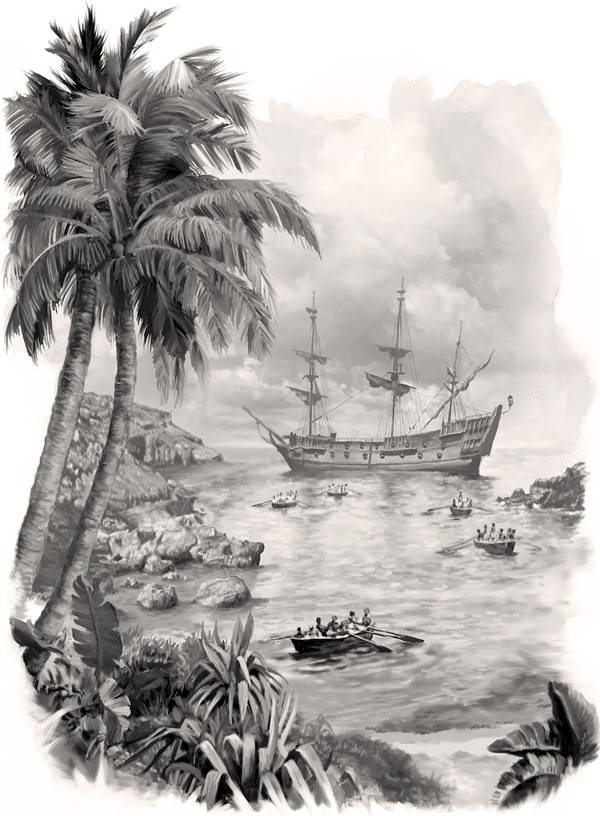
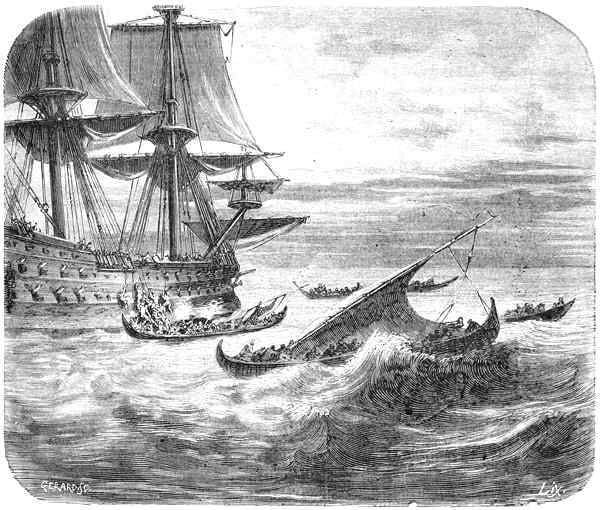
D'Ogeron took measures to relocate to Tortuga approximately 1000 buccaneers who still lived in remote areas of Hispaniola. Tortuga's population grew rapidly, mainly in the eastern part of the island. The famous French scientist and diplomat Francois Blondel, who visited Tortuga in 1667, compiled a list of Tortuga settlements - these turned out to be 25. In addition to Baster, which became the patrimony of visiting filibusters, such settlements as Cayon (the richest colonists lived in it), La Montagne (the governor's residence was located here), Le Millplantage, Le Ringo, La Pointe o Mason.
In the second half of the 17th century, the composition of Tortuga’s population was approximately the following: about three thousand buccaneers (who hunted, including Espanyol), three to four thousand “inhabitants” (colonists involved in agriculture) and “recruited” (about them described in the article Filibusters and buccaneers), up to three thousand privateers and filibusters, which, however, could hardly be called permanent residents.
Fun life on Tortuga island
Over time, even a bank appeared on Tortug, and then - Catholic churches and Protestant chapels, in which "workers of the sea" could ask their beloved saint for intercession and help. Naturally, the “service sector” began to develop: the owners of taverns, gambling houses and brothels gladly provided pirates with the opportunity to leave all their “earnings” in their establishments.
By the way, the first brothel of Tortuga (which also became the first brothel of all America) by order of d'Ogeron was opened in 1667 - and this immediately increased the number of pirate ships arriving unloading booty in the harbor of Baster and Cayonne, and therefore increased revenue islands. Port Royal, a competitor to Tortuga, appreciated this initiative, and very soon brothels appeared in Jamaica's Pirate Babylon.
In 1669, 2 ships were delivered to Tortuga 400 by fellow countrymen d'Ogeron (from Anjou), among whom were about 100 women. Some authors report that they were “perverted young girls” who were sent to Tortuga as punishment, having previously been publicly punished with a whip. It seems that they replenished the brothels of the "merry" island. In total, during the reign of d'Ogeron, about 1200 prostitutes were brought to Tortuga.
However, it was d'Ageron who came up with the idea to bring respectable ladies ready to become wives of the colonists to Tortuga and San Domingo from Europe. These women were “sold” to those who wanted to start a family, and for a lot of money.
Martial traditions of filibusters
How profitable were the corsair raids?
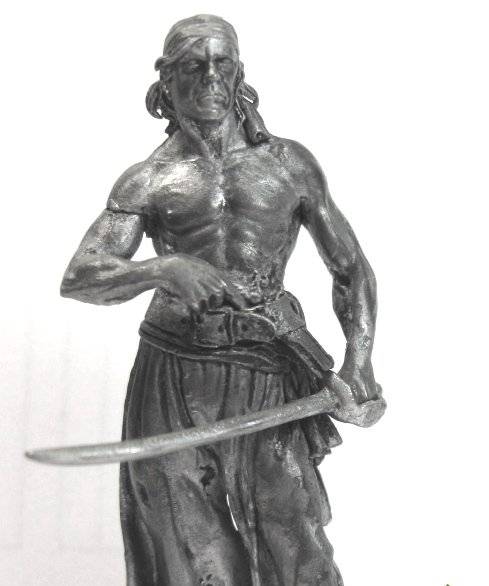
Before the campaign, the filibusters made an agreement, which they called la chasse-partie - "hunting salary." It agreed in advance on the shares of team members and the captain. The only crew member who received a salary, even in the event of an unsuccessful raid, was a ship's doctor. Part of the money paid immediately - for the purchase of drugs.
After the battle, the filibusters piled all their booty on the deck near the main mast, while everyone (including the captain) had to swear on the Bible that he had not hidden anything from his comrades. Violators, at best, were stripped of their shares in the division of the loot. But they could “condemn the landing”: leave on an uninhabited island with a gun, a small supply of gunpowder, lead and water.
The income of an ordinary filibuster after a successful trip could be from 50 to 200 pesos (1 pesos equaled 25 grams of silver). The captain received at least 4 shares of an ordinary pirate, but sometimes even 5 or 6, an assistant and a quartermaster - two shares each, a young man - only half the share of an ordinary. Separate remuneration was given to the ship carpenter and the ship's doctor, who were so valuable specialists that they usually did not take part in the hostilities. The ship's doctor, as a rule, received a “salary” of at least (and often more) the assistant captain. Moreover, remuneration was also paid to the doctor of an enemy ship, if he, having been captured, provided assistance to wounded corsairs. Bonuses for “military merit” were also paid - usually in the amount of 50 pesos. If the ship acted as part of a squadron, and before the voyage an agreement was reached on a “fair” division of production between the crews of all ships, then, in the event of the capture of an enemy ship, his team was paid a bonus in 1000 pesos. In addition, relied on "insurance" payments - for injury or injury. Loss of the right hand was usually estimated at 600 pesos or six slaves, loss of the left hand or right leg, or serious injury - at 500, loss of the left foot - 400 piastres, loss of the eye or finger - 100. Part of the production was transferred to the relatives (or matlot) of the victims.
There were other expense items: 10% of production was paid for a letter of marque, corsairs who didn’t have it, presented the same amount to the governor of “their own” island so that he would not be too nitpicking and ask unnecessary questions.
One could buy a horse for 10 pesos in Europe, a good house for 100. And on Tortug, the price of one bottle of rum sometimes reached 2 pesos. In addition, ordinary pirates rarely saw gold or silver: captains often paid with them goods from boarded ships. These could be rolls of cloth, clothes, a variety of tools, bags of cocoa beans. Tortuga resellers took the goods at a huge discount, to sell production at half price was considered a great success.
“What is a bank robbery compared to the foundation of a bank?” B. Brecht asked a rhetorical question in The Three Penny Opera. The filibusters, who were not afraid of either God or the hell, look like just petty punks in comparison with these “sharks” who robbed and literally “undressed” the “gentlemen of fortune”, risking only hemorrhoids from long sitting at their desks. At the same time, nothing is known about the attempts of the drunken filibusters to rob these bloodsuckers: perhaps they had strong security teams, and maybe it was believed that attacking the merchants and owners of the entertainment establishments of “their” island “out of concept”.
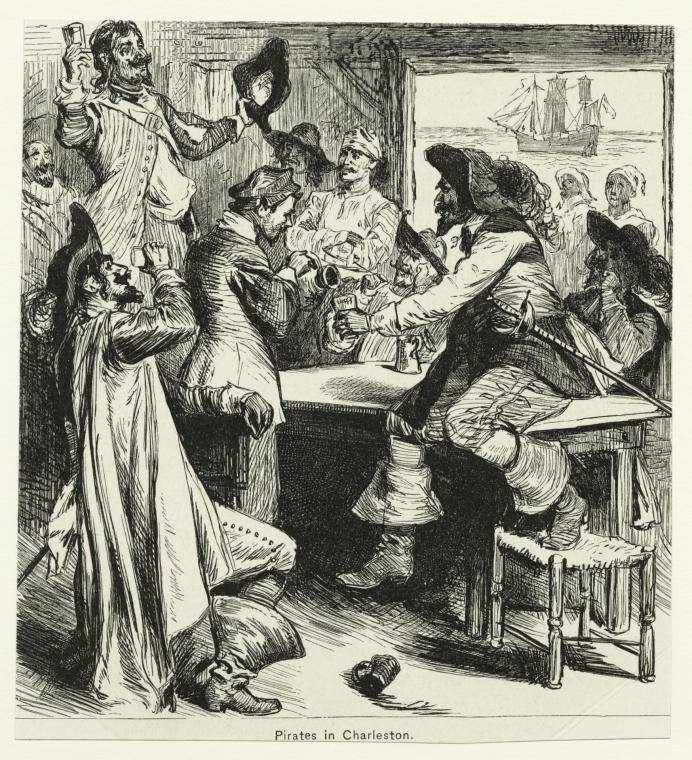
In general, the profit of all kinds of "businessmen" and the owners of the "evil places" of Tortuga was simply outrageous. Therefore, few of the filibusters who returned here managed to “walk beautifully” on the shore for more than a week. Here is what Exvemelin writes about the “trick” on Tortug’s corsairs Olon after the famous and very successful trip to Maracaibo, according to which each ordinary pirate received an amount equal to the four-year income of the buccaneer:
But to get drunk at sea, risking drunks to meet a storm or a warship, could only suicides. And the prospect of losing production due to an inappropriately asleep forward looking or bast of a non-knitting steering did not inspire anyone.
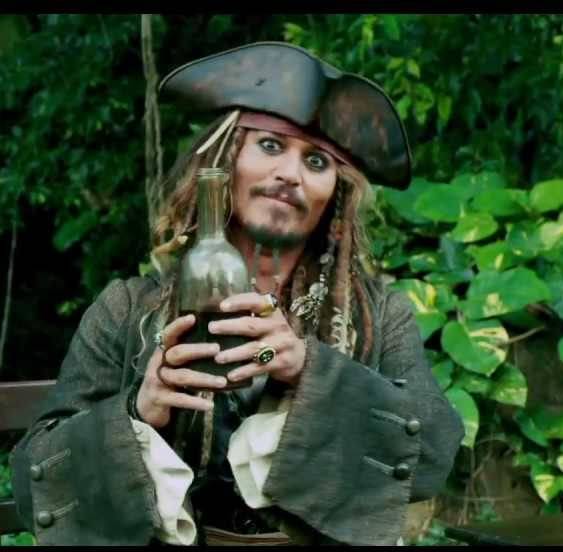
In sea trips, rum was added only in small amounts to spoiled water. The discipline on board the pirate ships was very strict, and, to discuss the orders of the captain, during the campaign was not accepted. Instead of an extraordinary outfit for a galley, an excessively talkative “gentleman of fortune” could immediately go to the sea to sharks, or with a bottle of rum to the very notorious “dead man's chest”: a deserted island in the middle of the ocean (if a human skeleton was found on one of these uninhabited islands, questions about how and why he was here, no one came up with). Such a case of punishment for disobedience and violation of discipline is described: in 1697, two French filibusters continued to rob the inhabitants of Cartagena after receiving an order to end the riots, while raping several townspeople. For this, they were immediately shot.
But when the ship did not conduct military operations, the captain’s power was limited, all issues were resolved at the general gathering of the team. Moreover, at that time the powers of the captain were often less than that of the quartermaster, who was elected by the crew. The quartermaster was in charge of supplying the ship with military and food supplies, monitored order on board, single-handedly decided on penalties for minor misconduct and acted as a judge in the event of serious violations (the captain acted as “prosecutor”, team members were “juries”), and he led the flogging of guilty sailors. He was often the head of the boarding team (that is, the commander of the most dashing corsairs - the "Marines"). In the event of a conflict, the pirates had to turn to the quartermaster, who could either independently resolve the dispute or attend their duel (which was held only on the shore), in order to track that each of the opponents had the opportunity to load a gun, and was not attacked from behind .
Now you understand why John Silver remembered with such pride that he was a quartermaster on John Flint's ship? And why he, not afraid to seem like a funny bouncer, said:
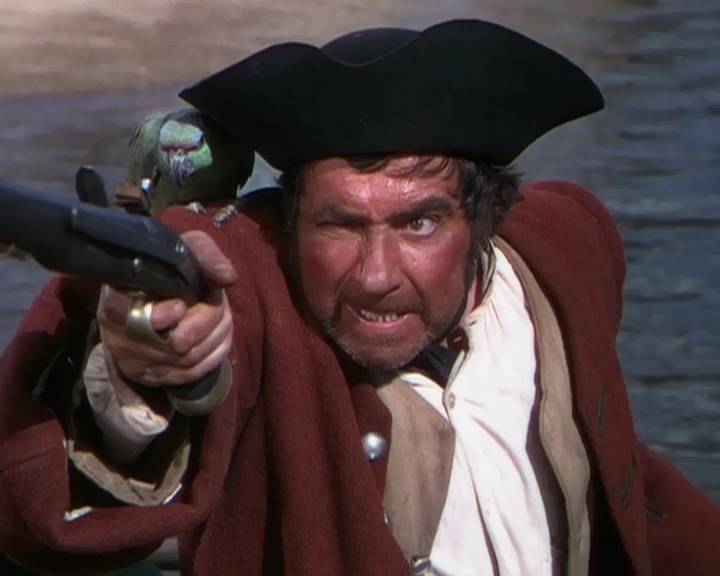
Since we remembered the "dead man's chest" and the "literary" corsairs Stevenson, at the same time we will tell about some of the "heroes" of the notorious "multi-series" Pirates of the Caribbean.
Sea Devil Davy Jones
So, get acquainted - Davy Jones, the sea devil, the hero of sailor tales and some "pirate" novels. The first of these books was The Adventures of Peregrine Peaks, written by Tobias Smollett in 1751. Here Davy Jones is a monster with round eyes, three rows of teeth, horns, a tail and a nose, from which comes blue smoke. And the "chest (or cache) of Davy Jones" in which Jack Sparrow fell is the seabed, where, according to legend, restless souls of drowned sailors live.
Kraken: the monster of other seas
But the Kraken fell on the Caribbean for a misunderstanding: this legendary sea monster, in fact, "lived" off the coast of Norway and Iceland. The first mention of this monster belongs to the Danish Bishop Eric Pontopnidan, in 1752 he described it as a giant crab fish that drags the ships to the bottom:
Kraken got its name from the epithet "Kraks", which applies to abnormal mutant animals.
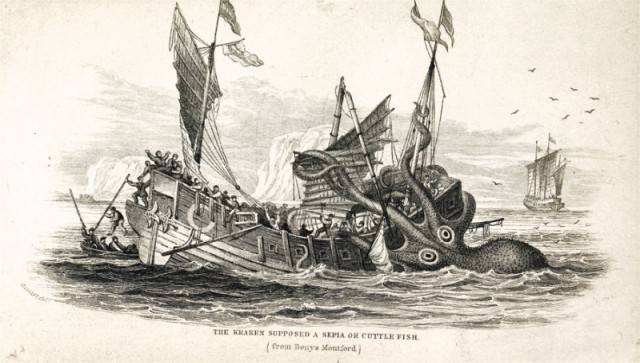
Fishermen believed that when the Kraken rests, huge schools of fish gather around him, which feed on his excrement. The Norwegian and Icelandic sailors used to say the big catch: "You must have been fishing on the Kraken." And in the XVIII-XIX centuries. The kraken is already described as an octopus, which is attributed to the squid's lifestyle: octopuses live on the seabed, and squids live in the water column. In German, the word "kraken" began to mean cuttlefish or octopus. Karl Linney, misled by the numerous accounts of “eyewitnesses,” included Kraken in the classification of real living organisms as cephalopods, giving him the Latin name Microcosmus marinus (book System of Nature, 1735). But later he removed from his writings all references to him. Real squids sometimes really reach a large size - specimens up to 9 meters long are described, with tentacles making up about half the body length. The weight of such record-breaking individuals reaches several centners. Theoretically, they can be dangerous for divers and divers, but they are not a threat to ships.
"Flying Dutchman" and his real captain
Well, a few words about the “Flying Dutchman”: oddly enough, the legend of the ghost ship did not appear in the Netherlands, but in Portugal. In 1488, Mr. Bartolomeu Dias reached the southern tip of Africa - the Cape of Good Hope, which he originally called the Cape of Storms. It was in those places that he disappeared with his ship during one of his subsequent voyages - in 1500. Then, among the Portuguese sailors, a belief was born that Dias always roams the seas on a ghost ship. In the next century, hegemony on the seas passed to the Netherlands, and the captain of the ship of the dead changed his nationality - apparently because the Dutch really did not like competitors, and therefore the meeting with their ship on the high seas did not bode well for the British, French, Portuguese, or Spaniards. Even the name of the captain of the ship of the dead was known and his name was by no means Davy Jones, but Van Straaten or Van der Decken.
In the next article, we will talk about the corsairs of Jamaica - the allies and competitors of the Tortuga filibusters.
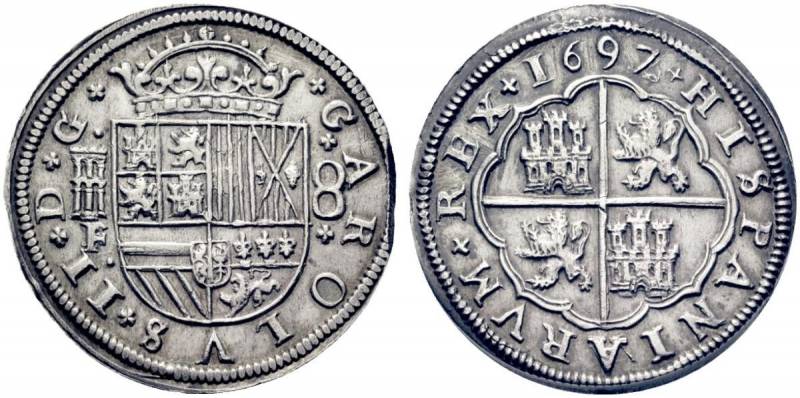
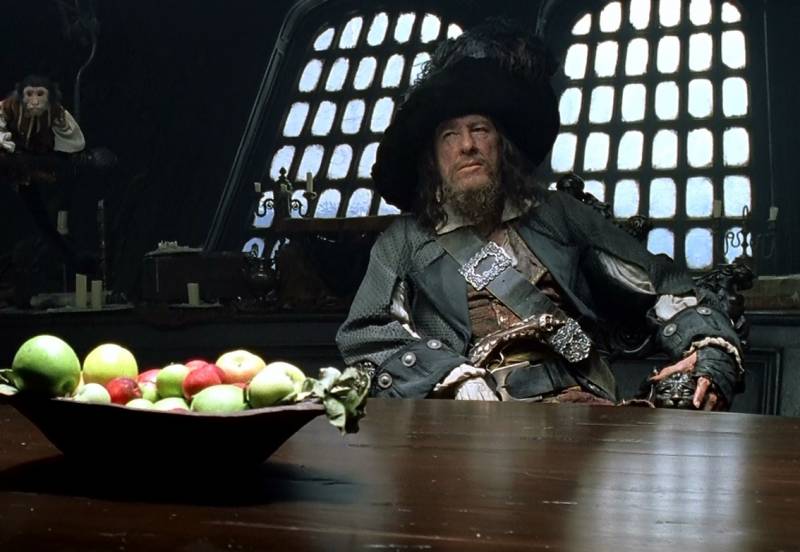
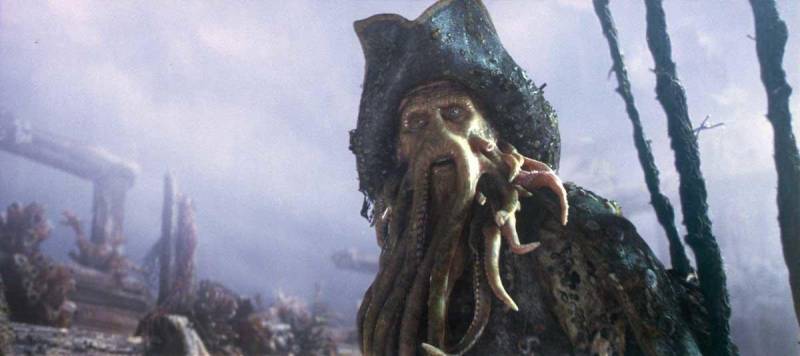
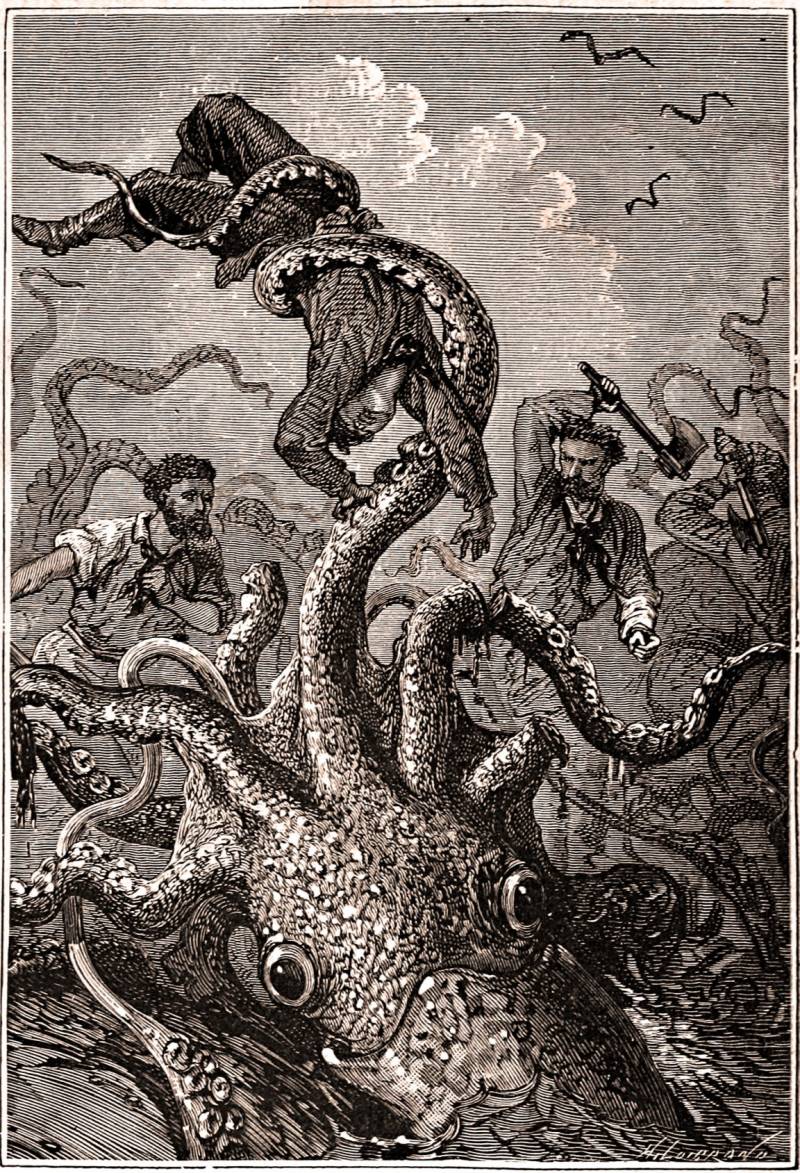
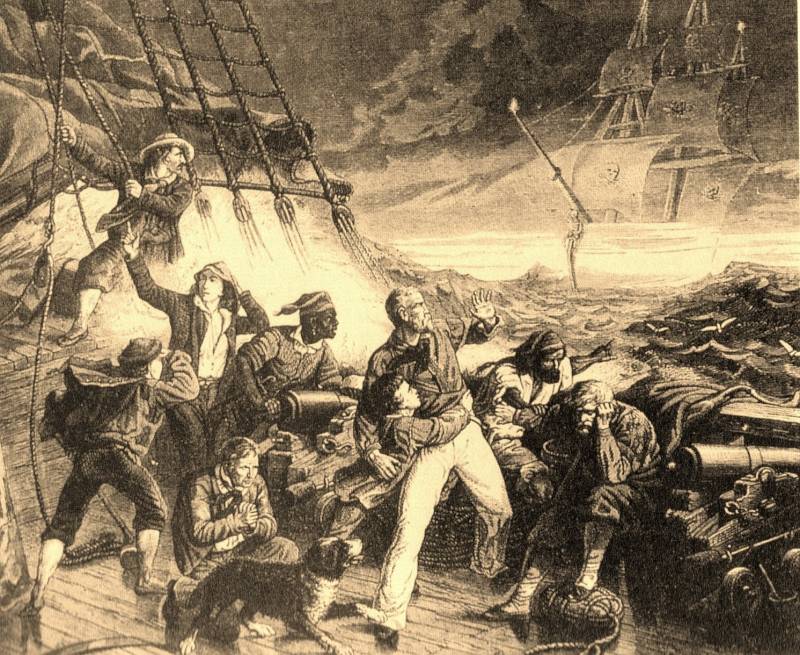
Information